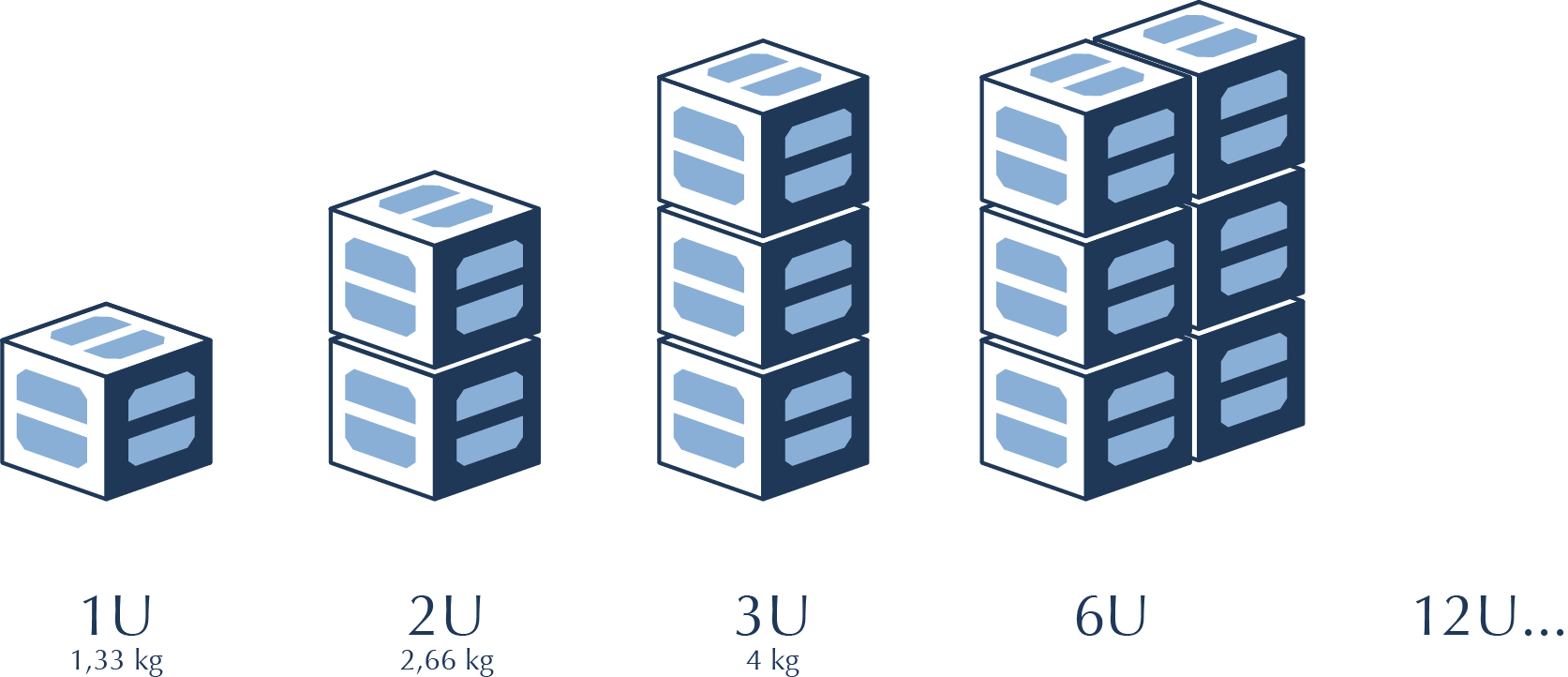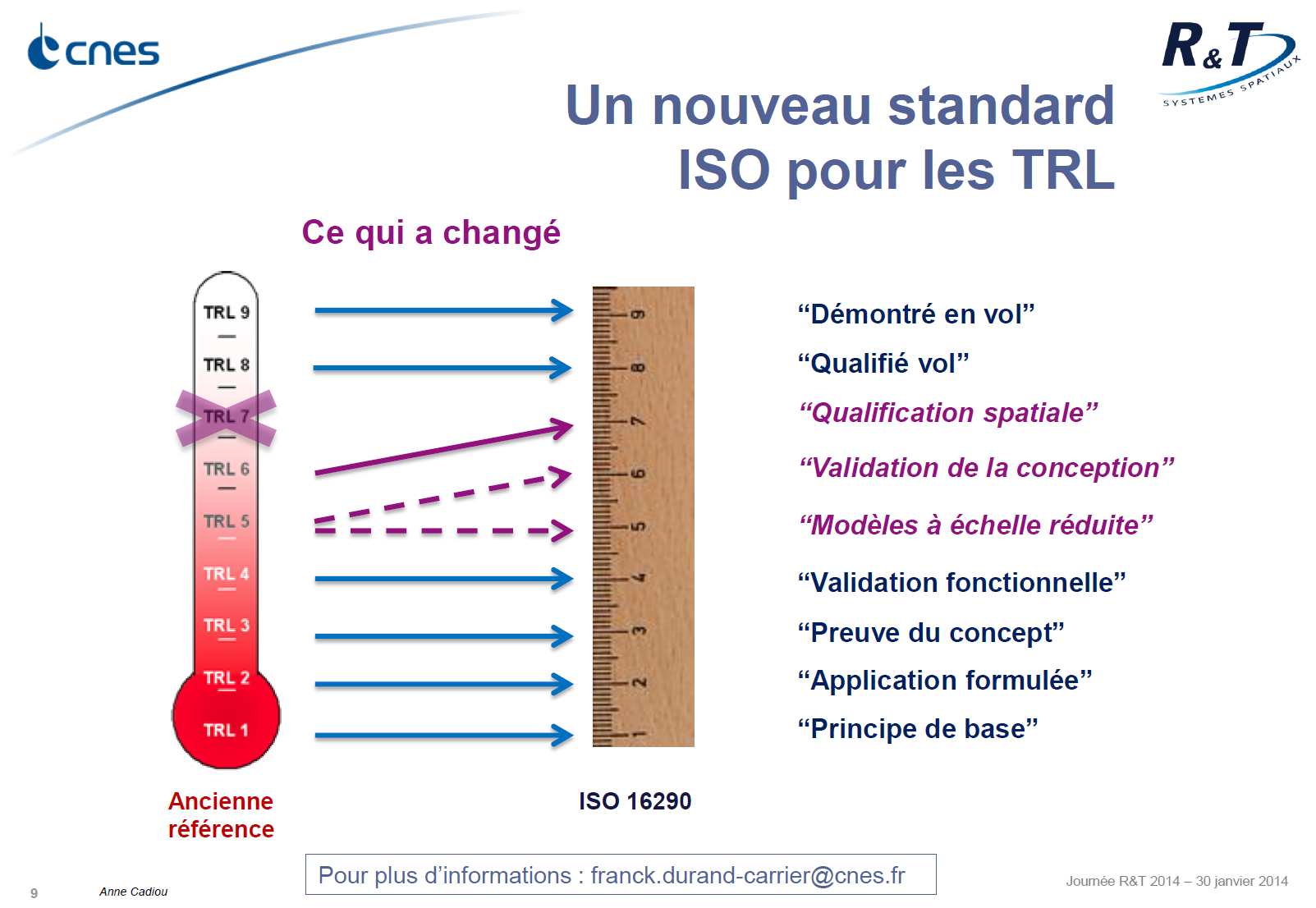Family - SmallSat, NanoSat, CubeSat

Within the nano satellite family the "CubeSat" corresponds to a standard defined in the USA in 1999 in order to facilitate access to space for students. The size of a CubeSat basic unit (1U) is normalised, 1U being a cube of 10x10x10 cm weighing 1.3 kg. The standard was further increased to 2U and 3U, meaning 2 or 3 superposed cubes. Today formats of 4U or N x 3U are available. Yet the idea behind the standard remains intact: to simplify as much as possible the realisation of a CubeSat by imposing its external shape, which makes it possible to adopt a standard deployment system, which in turn interfaces in a standard way with the launch vehicle according to the requirements of space qualification and safety.
This standard greatly simplifies the construction and launching of satellites. In 15 years it has led to the realisation of hundreds of CubeSats projects, the first French project being "Robusta" in 2012 designed by a team from the University of Montpellier.
Illustration : CubeSat

The CubeSat is placed in the off position in a sealed deployer (P-POD or equivalent), attached to launch vehicle. The CubeSat remains in this position until it is released into space by opening the deployer. The release triggers the power-up of the CubeSat and the beginning of its mission.
Three applications for nano satellites
Generally three types of applications for CubeSats, or any satellite with a mass smaller than 50 kg, scale can be defined.
Educational Nanosat: to train students in a number of engineering disciplines needed to develop a satellite. It is for this purpose that the CubeSat standard was created in the first place. In this application the mission of the satellite itself is not in the main goal.
Technology Nanosat: to demonstrate a particular technology in a space environment using a satellite that is much cheaper than a traditional mission. In this way nano satellites can help us prepare the instrumentation of tomorrow. If such a nano satellite mission is successful the technology will have a higher TRL (Technology Readiness Level, see below), making it possible to propose it later for more ambitious scientific space mission that can be of any format.
Scientific Nanosat: to acquire scientific data with an instrument mounted on a nano satellite. Scientific applications are gradually emerging with a large variety of concepts. An example is a CubeSat to accompany a mother mission to recognize the terrain before approaching an asteroid, or a fleet of nanosatellites to perform simultaneous measurements. To distinguish between these and the educational and technological nano satellites, the term "research" satellite is sometimes used.







